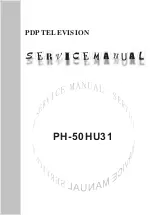
Page 36
•
Video
– (H.264/262/265HEVC) in MKV, MP4, and MOV files; VP9 in MKV files
•
Music
– AAC (5.1), MP3, WMA, WAV (PCM), AIFF, FLAC, AC3, and DTS
*
•
Photo
– JPG, PNG (up to 16k x 16k pixels), GIF (up to 16k x 16k pixels)
To see the latest list of supported formats, view
Help
in the Media Player.
The Roku/USB Media Player displays supported file types
*
only, and hides file types it knows it cannot
play.
Playing content from local network media servers
If you have connected your TV to a network, it can play personal video, music, and photo files from a
media server on your local network. Media servers include personal computers running media server
software such as Plex or Windows Media Player, network file storage systems that have built-‐in media
server software, and other devices that implement the specifications of the Digital Living Network
Alliance. Some servers do not fully implement the DLNA specification but are UPNP (Universal Plug and
Play) compatible. The Roku Media Player will connect to them as well.
Some media servers can convert files into Roku compatible formats. DRM-‐protected content is not
supported.
Using your TV in a hotel or dorm room
Hotels, school dorms, conference facilities, and similar locations with public wireless Internet access
often require you to interact with a web page to authenticate your access. These restricted public
networks are commonly known as captive portal networks. When you select a network of this type, the
TV automatically detects that additional information is needed and prompts you through using another
wireless device to supply the requested information.
Tips:
•
Using your Roku TV on a hotel or dorm room network requires wireless availability and
use of your network-‐connected smartphone, tablet, or computer to authenticate access
to your account.
•
Be sure to bring your Roku TV remote control, because the Remote feature of the Roku
mobile app may not work when connected to a hotel or dorm room network.
•
Content might be limited or unavailable if you try to connect outside your home country
due to geo-‐filtering.
*
DTS audio, whether in music or video files, is supported only by pass-‐through, meaning that the TV cannot
directly output the sound of a DTS file, but can pass it through to a DTS-‐compatible receiver that is connected to
the HDMI ARC or S/PDIF connector on the TV.
















































